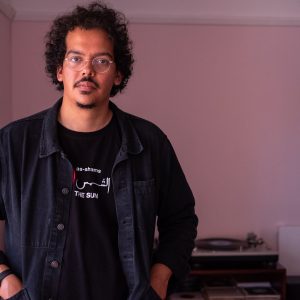Book Review | Mermaid Fillet is rooted in memory
Mia Arderne has entrenched her debut novel in the northern Cape Town suburbs of her youth through its language, characters and their experiences, offering acute observations of contemporary South A…
Author:
17 December 2020

Mia Arderne’s debut novel, Mermaid Fillet, reads with the force of a gusheshe, the iconic BMW 325is spinning plumes of smoke around the reader and leaving them with the feeling of having not only witnessed an extreme sport but also an act of art.
In this case, the extreme sport is Arderne’s acute observations of contemporary South Africa and a writing style that can be likened to the sensibilities of Quentin Tarantino and Zora Neale Hurston, in some ways. The scenes jump across characters and time much like Tarantino’s Pulp Fiction. Her writing of dialogue is reminiscent of Hurston’s, who had an innate ability to convey the complexity of being and experience through the way in which her characters spoke.
The book’s short chapters are fast paced and yet span three decades. The novel provides commentary on a number of themes such as violence, trauma, substance abuse and what Arderne describes as “the appeal and pitfalls of hype culture”, as well as the “elitist and exclusionary nature of woke discourse”.
The author carefully crafts a fantastical, magical world of dark, stark reality. Here, in Arderne’s world, an omniscient goddess menstruates stormily from the sky every time a woman is violated, which in South Africa is often.

Approaching writing
Some authors, like Zadie Smith and Vladimir Nabokov, become writers through reading. Others, like Arderne, become writers through experience. Her writing is informed by her life, with the songs and inanimate objects that define her being key influences on the novel. It’s visceral and steeped in a deep understanding of her characters that one can only get from living alongside them, in Cape Town’s northern suburbs.
In a chapter of her non-fiction essay collection, Changing My Mind, Smith puts writers into two loose categories, the Macro Planners and Micro Managers. She writes, “Macro Planners have their houses largely built from day one, and so their obsession is internal – they’re forever moving the furniture … Micro Managers build a house floor by floor, discretely and in its entirety … Because Micro Managers have no grand plan, their novels exist only in their present moment, in a sensibility, in the novel’s tonal frequency line by line.”
Related article:
Arderne is a Micro Manager. She appears on the computer screen for a virtual interview with tousled hair, and coffee and cigarettes as her companions in her Cape Town flat. It feels familiar, like a visit with an old friend or a cousin.
No stranger to writing, Arderne has penned articles for an impressive number of publications such as the Mail & Guardian, Marie Claire, GQ Japan and Cosmopolitan. She then says somewhat surprisingly, “So my [writing] process is that there is not much of a process,” explaining further, “I didn’t know, until the very end, that it [the novel] was going to called what it was called. I didn’t know where the characters were going. I didn’t know what the end was going to be. Like, I had no structural plan.” She built the novel from the ground up, one floor at a time.
Scaffolding sensibilities
Once the novel existed in first-draft form, assembling the scaffolding was no small feat.
Mermaid Fillet emanated from various pieces Arderne had written over decades and discarded along the way. Some of the passages date back to when she was at school. To pull the novel together in a cohesive way, Arderne had to make use of white boards, graphs and timelines. What resulted is a tightly wound novel that explodes from the opening line: “Don’t be taken for a poes.” A vulgar exhortation to not appear timid.

The urgency of the novel is best highlighted in that the crux of the novel comes exactly four pages in. Despite this early revelation, Arderne keeps her readers hooked until the very end, as she slowly peels back the layers of her characters’ lives and pasts as well as several major plot twists.
The chapter headings read like songs on a Kendrick Lamar album: Oblivion, Trash, Lust, Chise and Devotion. Each subheading within these overarching chapters is named after the characters. This seemingly simple technique elevates the visual quality of the novel. The reader is thrown into seeing from the perspective of that character.
In some scenes, Arderne expertly writes out the same scene from different perspectives as if a camera pans to a new character and the reader relives the scene again, but completely differently. In doing so, Arderne is able to give readers an intimate portrait of each of her characters, their history and why they make the complex choices they do. She naturalises empathy.
Related article:
The most notable example of this is Isaac, who because of his taste in extreme violence and alcoholism could easily be read as abominable. However, he does not appear as only this. Arderne carefully constructs his complexity over the course of the novel. With Isaac about to assassinate a key lawyer, Arderne writes, “Is violence a sexuality? ‘Cause Isaac was always lis [lusting for it]. Like with any lust, the compelling thing about it is the variety of means for its execution, the range of choice and repetition. Isaac’s proclivity for nuance is what secured his greatness as a violent man. Isaac was gluttonous about violence.”
A little earlier, Isaac and his boyfriend have an intimate and playful moment where his boyfriend affectionately says that Isaac is like a puppy. To which Isaac retorts, “You think I’m a puppy, but maybe I’m just a hond [dog].” Yet through Isaac’s relationship with his sister, Letitia, and the disclosures of their past, the reader is left with a feeling more complex than only dislike, aware of the complexity of the characters’ lives and with a need to maintain space for ambiguity.
Similarly, with Genuine Ou, Arderne places extreme violence alongside complete tenderness, shown primarily through the character’s engagement with his wife Leticia. The reader is confronted with the reality that both can and do uneasily co-exist.
Related article:
Michaela, whom Arderne introduces as a familiar stereotyped character that we all know (not so) intimately on social media, is also treated with empathy. Michaela is woke and channels much of her energy into saying all the right things: “She didn’t need that kind of energy in her life. She needed more turmeric, apple cider vinegar and barley. She had body-positive queer POC safe pop-up spaces to attend.” Arderne asks about the meaning of language and its expression of politics, and how it meets practice and intention.
As the novel unfolds, Michaela is shown to have the natural inconsistencies of any human being. “Maybe I don’t want to think any more,” she reflects, thinking about how she carefully constructs herself, against her desires to be more human, which for her translates to sipping Coke, wrestling with listening to problematic music and not being vegan. With words that appear light, Arderne makes concrete the complex, the unexplained, the tricky and the inconsistent. While this is certainly a lighter moment in the novel, Arderne’s commentary on the politics of wokeness and the sheer unsustainability of being perfectly consistent all the time and in all things is relevant and useful.

Identity in language
Hurston’s writing was so profound and impactful because she validated and centred Black identity in part through her writing of dialogue. Her novel Barracoon was rejected in 1931 because she refused to change the language from dialect to a standardised version of English to appease the publishers. It remained in a library in Howard University and was only published in 2018.
Deborah Plant, who edited Barracoon, says, “Embedded in his [Cudjo Lewis, née Oluale Kossola] language is everything of his history. To deny him his language is to deny his history, to deny his experience – which ultimately is to deny him, period.” Hurston’s work has gone on to influence Alice Walker, Toni Morrison, Zadie Smith and others.
Arderne validates the history, experience and identities of her characters by writing fluidly in the language particular to the community in the Cape categorised as coloured during apartheid. In this instant this is a pointed, humanising artistic technique that brings this experience into focus.
Related article:
Arderne cites the work of actress and writer Buhle Ngaba, André Brink’s magical realism and music as key influences. While writing, she listened to a lot of Future, Frank Ocean, trap, yaadt – a sound DJ K$ describes as “an umbrella over many sub-genres of mainly house music. It’s the music you’re most likely to hear at a braai at your ma’s house, booming out of the system of your cousin’s parked car, while everyone dances” – and smooth jazz. Interestingly, Arderne says that music took her back to very specific places, as did certain objects like styrofoam boxes of biryani. Thinking about the way she has written the novel, Arderne’s influences are unconventional and unsurprising.
She writes to centre and validate the experiences of her subjects as well as herself. Her words are anchored in a recognisable and familiar community and time where Tamia’s music blares from a Nissan Sabre, kids sit on top of the green electricity box catching up and the older girls wear butterfly clips in their hair.
Arderne says a lot of the writing of the novel was driven by a nostalgia for the northern suburbs as she had just moved out and closer to central Cape Town. She says, “I felt like I had left my home behind … So I don’t know if there was further immersion or like, shit, I have left my roots. And I feel like I am just outside of what I know. So maybe it came from no longer being immersed in that and wanting to.”
In writing about the northern suburbs, Arderne returns home, with evocative results.




